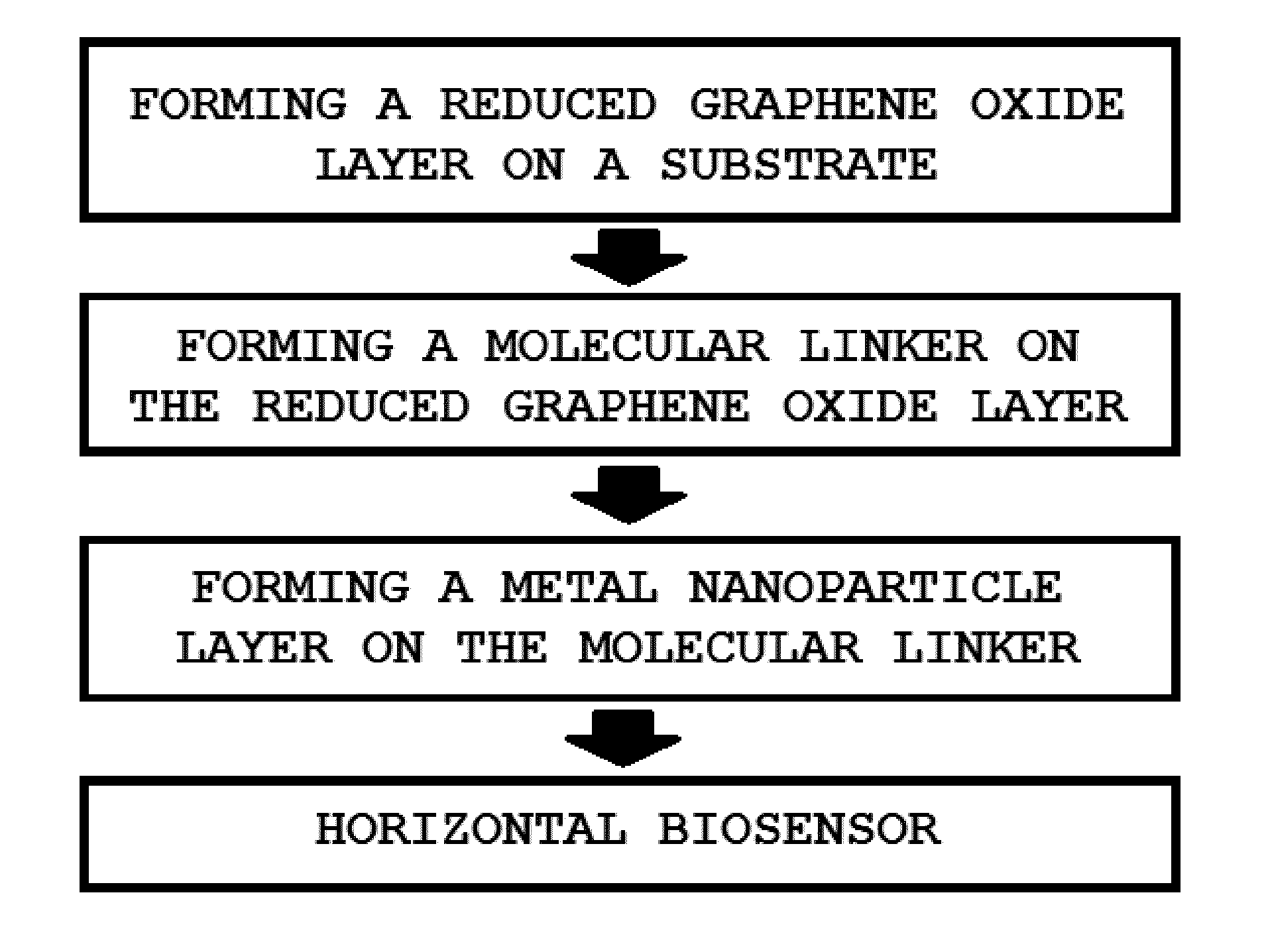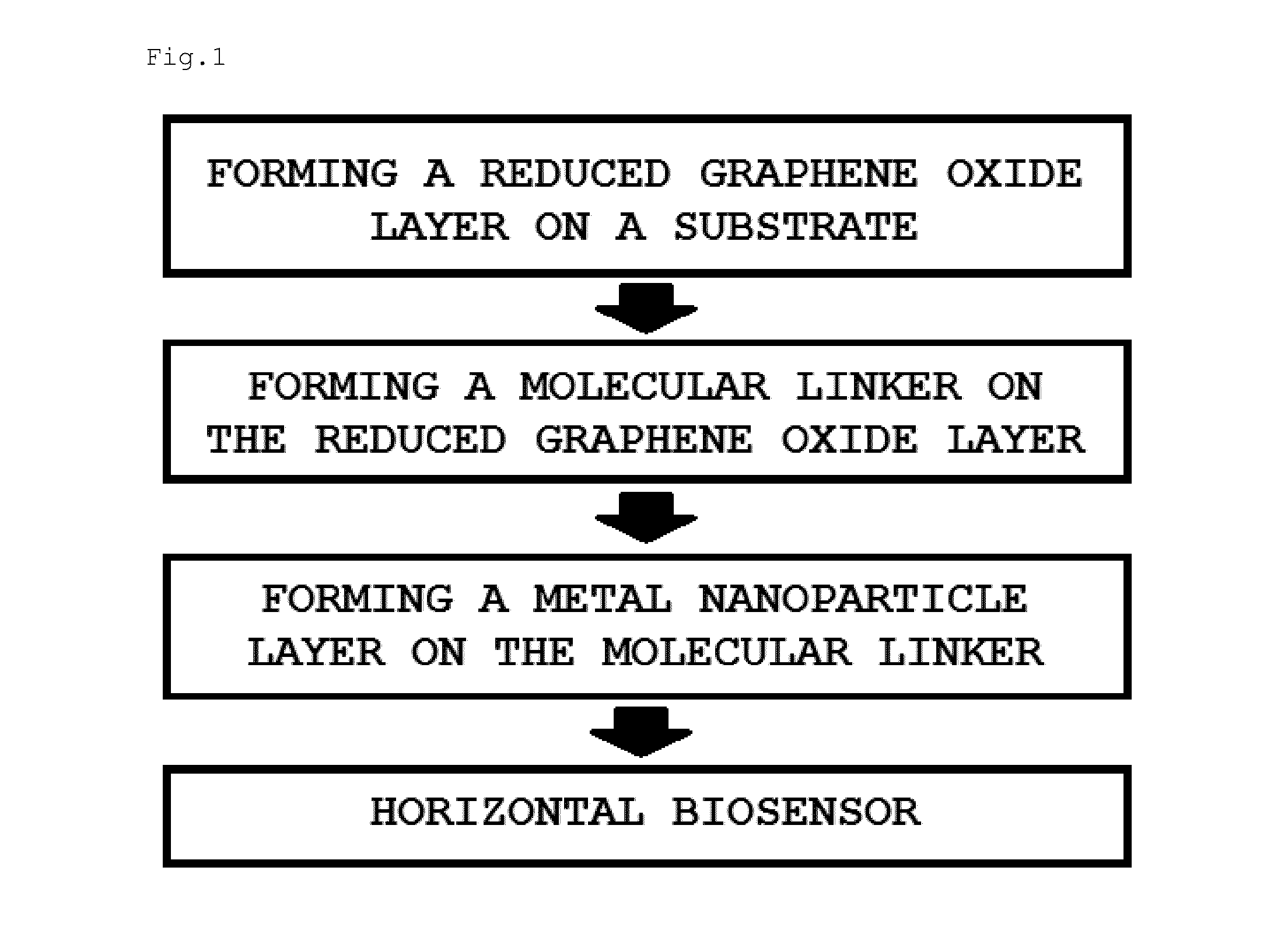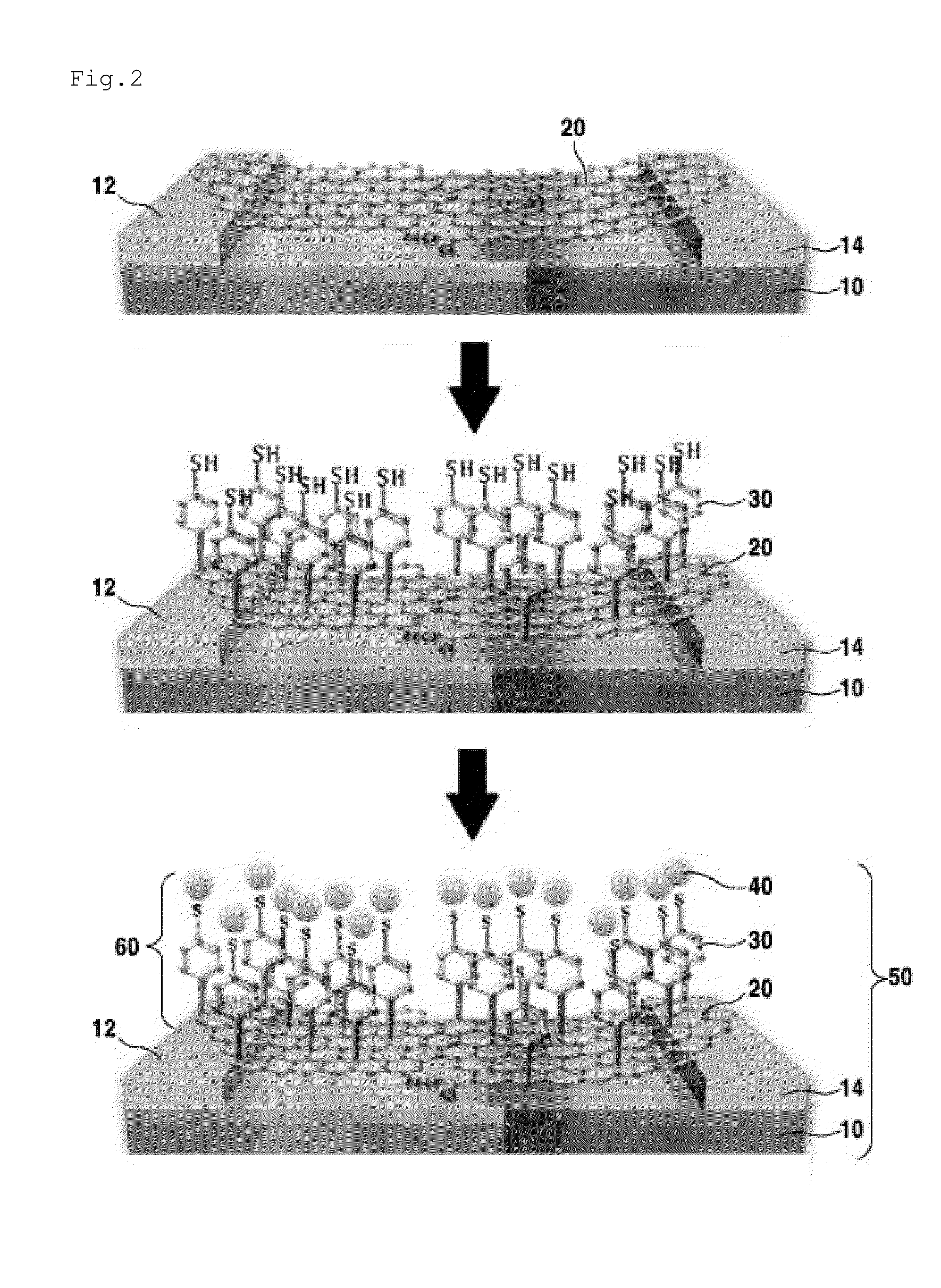Biosensor comprising reduced graphene oxide layer
a biosensor and graphene oxide technology, applied in nanosensors, material analysis, instruments, etc., can solve the problems of low production yield and high cost, reduce the life span of the biosensor, and difficult to uniformly disperse the aunp in the organic layer, etc., to achieve simple and low-cost methods, simple reduction of go, and high sensitivity
- Summary
- Abstract
- Description
- Claims
- Application Information
AI Technical Summary
Benefits of technology
Problems solved by technology
Method used
Image
Examples
examples
[0064]1. Synthesis of MBDT Salt
[0065]In the present example, in order to synthesize a MBDT salt used as a molecular linker, first, 4-aminothiophenol was dissolved in ethanol in a flask, and a 48% aqueous fluoroboric acid solution was added to the flask, and thus, a mixture was formed. The resultant mixture was then cooled to about −5° C. Then, isoamyl nitrite was added dropwise to the mixture, and then the mixture was stirred for about 0.5 hours. Then, the mixture was diluted with diethyl ether, and a precipitate of MBDT was formed as brown crystals. Then, the precipitate of MBDT was purified by recrystallization using acetone and cold diethyl ether, respectively.
[0066]2. Preparation of GO Solution.
[0067]In the present example, graphene oxide (GO) was synthesized using a modified Hummer's method. To be specific, the GO of about 40 mg and distilled water of about mL were mixed together in a falcon-tube. Herein, to disperse the GO in the distilled water, if necessary, sonication for m...
PUM
| Property | Measurement | Unit |
|---|---|---|
| gap width | aaaaa | aaaaa |
| binding energy | aaaaa | aaaaa |
| binding energy | aaaaa | aaaaa |
Abstract
Description
Claims
Application Information
 Login to View More
Login to View More - R&D
- Intellectual Property
- Life Sciences
- Materials
- Tech Scout
- Unparalleled Data Quality
- Higher Quality Content
- 60% Fewer Hallucinations
Browse by: Latest US Patents, China's latest patents, Technical Efficacy Thesaurus, Application Domain, Technology Topic, Popular Technical Reports.
© 2025 PatSnap. All rights reserved.Legal|Privacy policy|Modern Slavery Act Transparency Statement|Sitemap|About US| Contact US: help@patsnap.com



